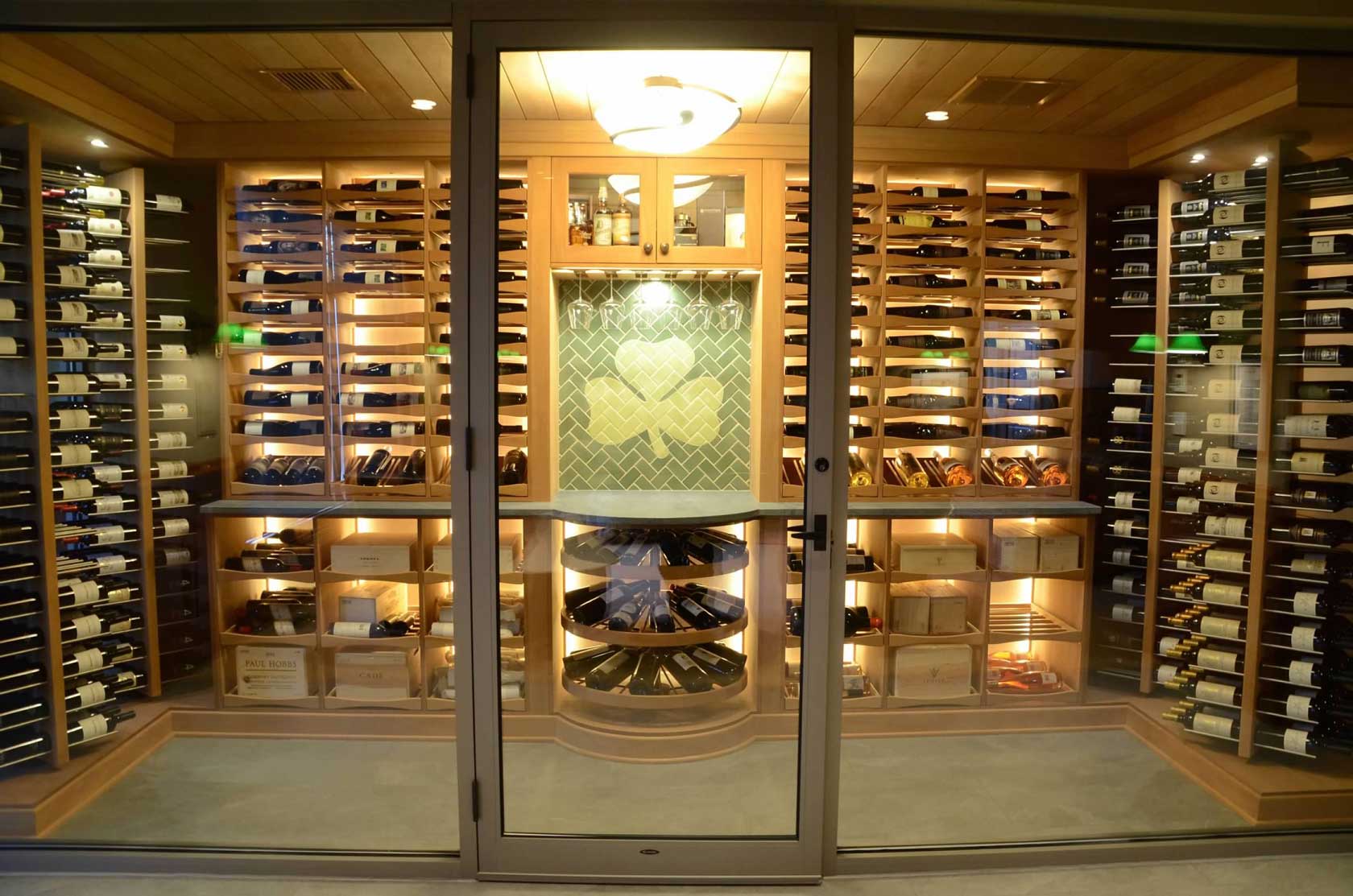The use of glass is a big trend in wine cellar design today. This was one of our 12 tips in our recent blog post on designing wine cellars, but it’s a big topic and it warrants a blog post of its own.
Years ago, one rarely heard of glass being used as a wall or door system in a wine cellar.
The primary reasons being:
- Glass lets in light, which is bad for wine.
- Glass doesn’t insulate well – it lets warm air in and cool air out, thus raising utility costs:
- The classic vision of a wine cellar is that of an old, European rustic cave-like space – and glass just doesn’t fit that mold.
My how things have changed! What happened? Regarding light infiltration, it’s pretty simple. Advances in glass and glazing technology allow for glass to filter out the ultraviolet light rays that are harmful to the wine, just like they do for your eyes with glasses.

Thermally speaking, it’s a much more complicated situation. While technological advances have been able to improve the energy efficiency of glass walls and doors, other considerations enter in.
Probably most importantly, we have learned that we can separate the tasting and consuming of wine from the storage and aging of wine by incorporating glass. This allows the conditioned “cellar space” to be smaller, thus saving energy and construction related costs, while preserving the wine appreciation experience.
In other words, we can create views into the cellar through glass, so we don’t have to be in the cellar to appreciate the collection. This actually improves the wine experience, because “hanging out” in a 55° degree wine cellar gets old pretty quickly. There are several approaches for incorporating glass in a wine cellar.

Going from the least to the most visibility also goes conversely from most to least energy efficient. Glass windows in a traditionally framed wall or door is the best in terms of thermal performance. Glass needs to be at least double paned, thermally broken, with UV filtration.
In other words, we can create views into the cellar through glass, so we don’t have to be in the cellar to appreciate the collection.
Due to the framing required, this approach will limit the amount of glass coverage more than the other two systems. Steel framed glass doors and walls will allow more glass because the framing members can be thinner.
Take a wine cellar door for example. Instead of a 4-inch wood frame around the perimeter of a door, you can use a 2-inch steel frame. Since steel is a better conductor of heat than would, there will be a slight degradation in thermal performance compared to wood.
Solid panel glass doors and walls provide completely unobstructed views into the cellar and are preferred by many as a result. The glass panels need to be at least ½ inch thick, but thermal performance declines further, due in no small part to the fact that it is impossible to provide a complete seal around the entry door.
Almost all collectors we see are looking for at least some glass in the design of their cellars, and all things considered, now there really isn’t an argument not to. Plus, as a lead-in to our final point, it enhances the enjoyment of one’s wine cellar by making it possible to see the collection but taste the wines in the comfort of 72 degrees instead of 55.

It should be noted that a full glass wall system is more complex construction involving costlier materials and time spent in measurement, design, and installation. By far the most influential force behind this trend is changing tastes, preferences, styles, and the role of a wine cellar in homes of wine lovers.
Instead of being away from the centers of activity and entertainment, they are now frequently the center. This has created an entirely new interpretation of wine cellar design.

While some collectors still prefer and old-world flavor, they want new world performance and technology. Other collectors have distinct stylistic sensibilities and want this incorporated into the design of their wine cellars. Where in generations past, the wine cellar was a male’s domain, we now see couples collaborating on the design of their cellars or a woman as the primary client and decision maker.
As designers have responded to these changing attitudes, a virtual plethora of new, more contemporary wine racks and cabinetry options have come into the market, ushering in an exciting and long-term sea change in the role of wine cellars in contemporary life.
